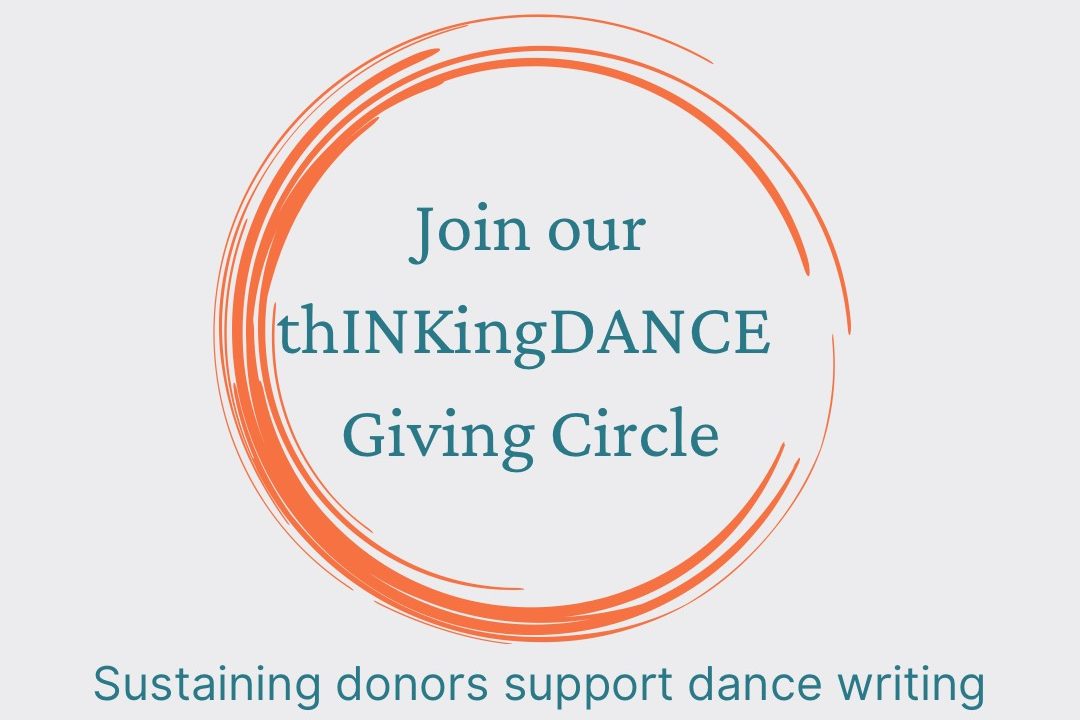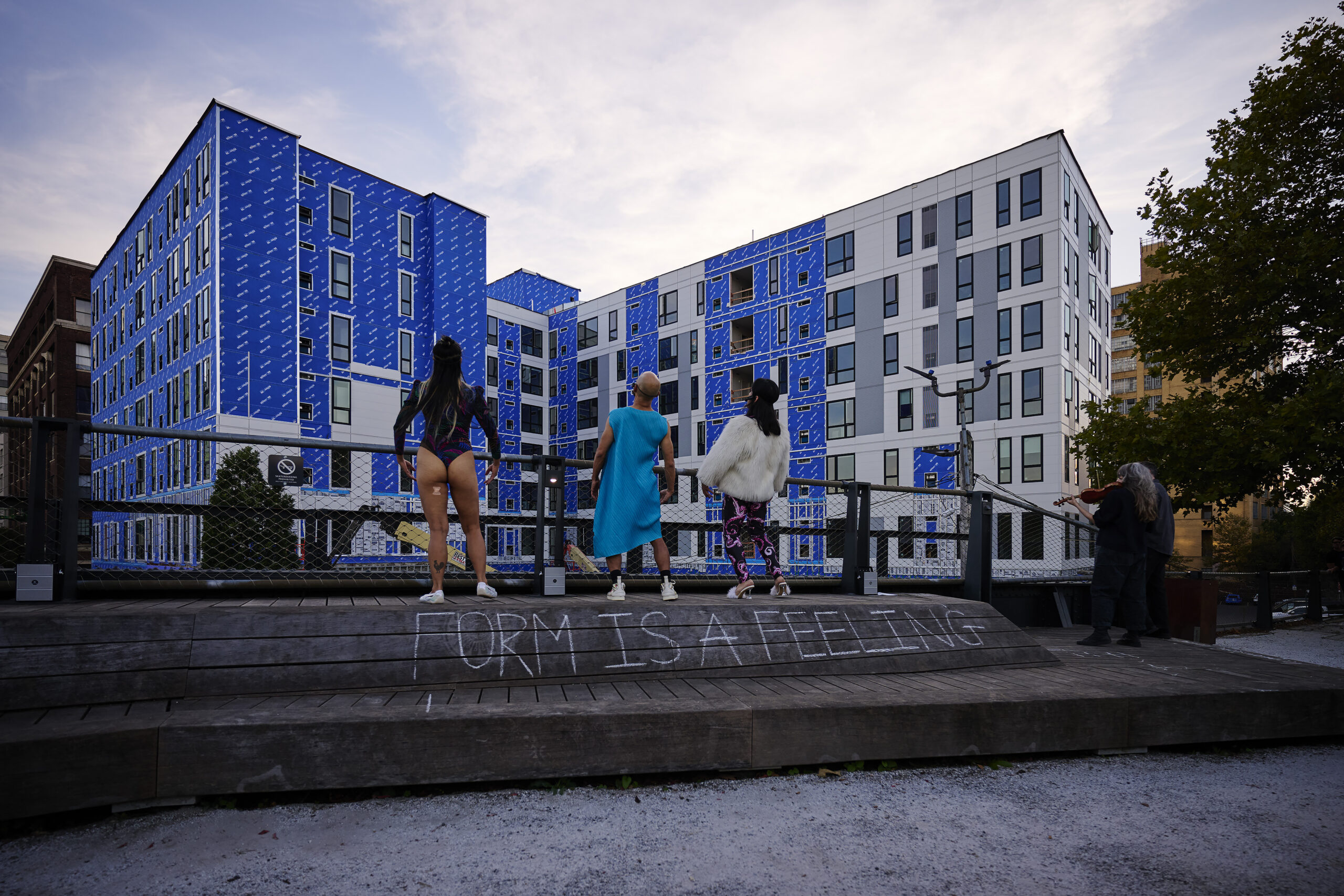Through performances spanning seven decades, Martha Graham (1894-1991) introduced a new movement language into the landscape of American dance—one more earthbound and visceral than classical ballet’s gravity-defying leaps, with subject matter leaning toward mythic figures from antiquity. Carrying on these traditions, classes in Graham technique continue around the world today.
But dance is transitory, and the importance of past trailblazers often gets lost—especially when those artists labored in a world without social media or the other readily available tools to document one’s work. For newer generations, modernists like Graham might appear archaic, their names recognizable, but their work unknown and their originality forgotten. Do the ideas that interested Graham still excite and provoke today? Is her choreography still dynamic, still relevant?
Richard Move has some answers. For nearly thirty years, they have kept Graham’s spirit alive and present through Martha@, an ongoing project that is part drag, part performance art—a love letter and homage to this idiosyncratic dance icon. Since their days playing “La Graham” at a tiny nightclub in Manhattan’s Meatpacking District, Move’s impersonation zealously reproduces Graham in deep aesthetic detail, accurately reproducing not only her clothing, hair, and make-up, but also excerpts of some of her most emblematic works. As part of BAM’s Next Wave Festival, Move and their collaborators presented Martha@BAM – The 1963 Interview.
A ghost light illuminates the dark stage, creating a seance-like atmosphere. Dressed perfectly as Graham, Move’s towering presence emerges from the darkness, one arm held straight while the other bends at a sharp angle, the combination suggesting strength and nobility. Soon, two former Martha Graham Dance Company dancers—Catherine Cabeen and PeiJu Chien-Pott—join Move’s slow march onstage. In the dim lighting, the trio’s procession makes their gestures appear ritualistic: three Delphic oracles summoning spirits.
With the lights brightening, two comfortable leather chairs appear. Lisa Kron enters in thick-rimmed glasses and a blazer, the embodiment of former newspaper dance critic and author Walter Terry. Kron-as-Walter greets Move-as-Martha who has just floated in again after a quick costume change; Martha makes the kind of grand entrance befitting a royal. Over the next hour, the two talk about Graham’s work, embodying their roles as if it is 1963 and the conversation is spontaneously unfolding in real time. The pair discuss Graham’s draw toward making dances about tragic female characters from antiquity, and uncover the meanings behind gestures in her choreography. Terry is a rational interlocutor, craving clear, concrete answers. At times, Walter seems a bit impatient with Martha’s verbal wanderings. Move embodies Graham with wit and enthusiasm, bending time to offer a present-tense look at Graham’s modern dance landscape.
The text of Martha@BAM – The 1963 Interview replicates an actual audio recording captured over sixty years ago at the 92nd Street Y (now 92NY), but it’s challenging to put into words the impressive accuracy with which Kron and Move fully inhabit their characters. A fragment of the original interview plays near the end of the performance and it becomes apparent just how faithfully the two have represented every pause, stutter, and incomplete thought. They accentuate every word and phrase carefully, each syllable minted with conscious precision. The historic conversation has not been doctored for cleanliness or edits; Graham’s intrepid mind and diversions from Terry’s main subjects are wholly accurate.
Move offers winks and eyerolls to the audience, sharing an understanding that this whole enterprise is a little absurd. Some of the verbal exchanges do feel silly at first. Martha confesses that the role of Medea partially originated from a desire to know what she had for breakfast. During this admission, Chien-Pott appears with a red belt of fabric. She pulls the metaphorical umbilical cord from her waist with anguished intensity, a glimpse into the potent power of the original Cave of the Heart dance from 1946. Later, Martha reflects upon the life of St. Joan (the subject of her 1955 Seraphic Dialogue), and of the feeling of sunlight upon her skin in a church in France. Cabeen underscores this moment, standing majestically as Joan, and framed by the illuminated glass orbs suspended above the interview space. The video design by Gabriel Barcia-Colombo and Robert Montenegro, incorporating close-ups of the real Martha Graham’s face along with excerpts from Graham’s choreography, further blurs the lines between past and present by evoking Graham as a mother, angel, and overseer of her continuing lineage.
Martha@BAM – The 1963 Interview is a lecture and a demonstration. It’s an introduction to an extraordinary artist’s work, as well as a deep exploration of choreographic philosophy. The piece is also a time-machine: through faithful recreations of dances and discussions, Move and their collaborators highlight the dramatic depth of Graham’s rich legacy. The result is an experience that is both serious and humorous. Martha is so unapologetically herself in this interview/performance. “If you do something over and over again,” she says at one point with a bright smile, “don’t get bored. Just think of dancing to your death.”
The queen of modern dance lives on.
Richard Move, Martha@BAM – The 1963 Interview. Oct. 29-Nov. 1, 2025.
thINKingDANCE published an edited conversation between Brendan McCall and Richard Move shortly before this performance.






